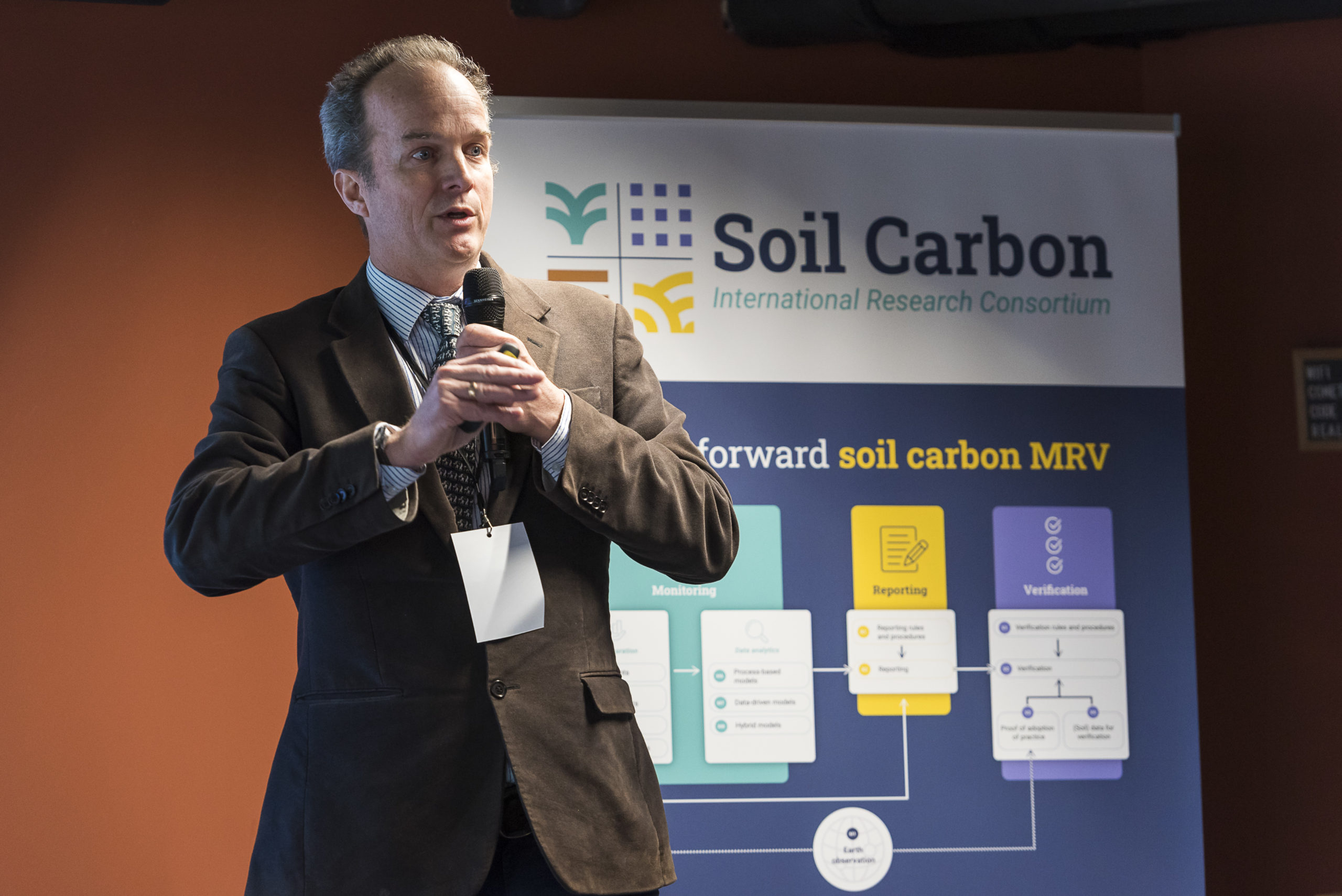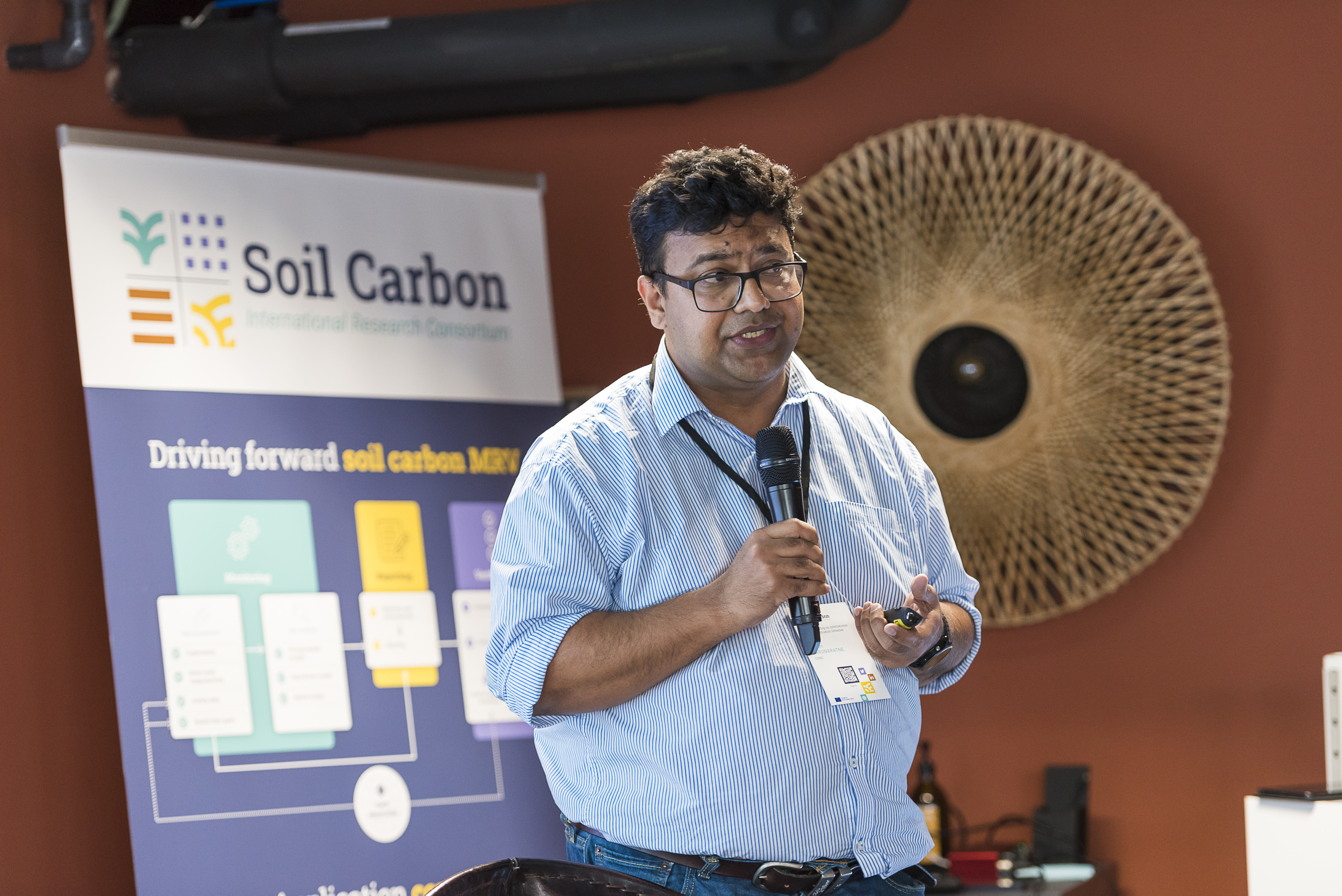‘In Australia, carbon loss is around 51%’
Senani Karunaratne, Senior Research Scientist at Commonwealth Scientific and Industrial Research Organisation (CSIRO), and Ben Macdonald, Group Leader of Soil Process and Function at CSIRO, represent the Soil Carbon International Research Consortium (IRC) regional ambassadors for Australia and the Pacific.
How does the soil situation in Australia compare with the global context?
The 2021 State of the Environment Report describes an overall decline in both the state and trend of natural capital in Australia’s land environments, including soil, and highlights how a renewed focus on landscape recovery can reverse some of these declines. Australia’s national science agency, the Commonwealth Scientific and Industrial Research Organisation (CSIRO) – for which we work -, is conducting a range of projects to tackle many of these challenges.
How does Australian and Pacific soil compare to other parts of the world? In both regions, which soil types are currently at greater risk?
Australian soils are prone to degradation due to their age, low nutrient levels, and the impact of the country’s climate. Poor land management in some regions further threatens soil function and the ability to provide essential ecosystem services. Sustainable soil management is essential for the long-term success of agriculture in Australia, as it is globally.
The Pacific region faces similar challenges, according to the Status of the World’s Soil Resources 2015 report. Atoll islands are a particular concern because of increasing populations, poor soil quality, vulnerable ground water systems and climate change. In parts of the Pacific, land degradation, nutrient imbalances, declining biological function, and high erosion rates threaten the viability of current agricultural systems and limit future management options. Large yield gaps persist, and soil fertility in island agricultural systems has yet to be restored.

What are the main challenges for soil biodiversity, sustainable management, and carbon storage in Australia and the Pacific?
A recent study led by CSIRO reveals that in Australian agro-ecosystems, over 40 years of cultivation have caused a carbon loss of approximately 51% in the top 0.1 meters of soil. However, conservation agricultural practices, such as no-till or strategic tilling and stubble retention, have helped increase soil carbon levels. Although restoring lost soil carbon remains difficult, significant national research efforts, led by CSIRO and other scientists, are focused on identifying the factors influencing soil carbon and measuring how much can be restored under current and future management practices.
The main challenge in the Pacific region is the development of a regional soil strategy that encourages collaboration across sectors, creates localised solutions, and builds capacity and expertise.
What is the current state of policy regarding soil carbon? Are you expecting any political progress on this issue in the near future?
The Australian Government recently launched a National Soil Strategy and Action Plan aimed at improving how the country values, manages, and enhances its soil. As part of this initiative, the Australian National Soil Information System (ANSIS) was released, along with the development of the National Soil Monitoring Program and the ongoing work of the Landscape Platform in the Terrestrial Ecosystem Research Network. Efforts are also ongoing to improve soil carbon measurement and monitoring, reporting, and verification – more commonly called MRV.
Australia is a country with a government-supported soil carbon crediting scheme. Over the past decade, the scheme has evolved from a measurement-only approach to the latest methodology introduced in 2021 which uses a combination of direct measurement and modelling, leading to a significant increase in soil carbon projects. These projects aim to diversify income streams and promote sustainable land management practices.
In the Pacific region, efforts have been focused on building regional capacity to measure, monitor, and evaluate soil properties, including soil organic carbon, while improving soil knowledge, policy, and management. These activities are coordinated by the Pacific Community (SPC), with the Pacific Soil Partnership playing an active role in organising regular initiatives across the region.

How can the IRC contribute to advancing soil conservation efforts in Australia and the Pacific?
The Soil Carbon International Research Consortium will provide Pacific communities, including those in Australia and New Zealand, with access to valuable information and opportunities for collaboration to improve soil carbon management. In the future, the consortium is expected to facilitate a series of workshops focused on soil carbon management, monitoring, evaluation, and policy development.
Moreover, the Soil Carbon IRC will develop MRV tool sets that will enable the Pacific Region to monitor and evaluate soil carbon and system health. These scalable tool sets will help with the development of resilient and sustainable land management across the many countries of the Pacific Region.
CSIRO is collaborating with SPC and the Pacific Soil Partnership to improve soil knowledge for sustainable land management and food security. Through projects funded by the Australian Centre for International Agricultural Research (ACIAR), training on soil carbon measurement and modelling have been undertaken, as well as the establishment of Pacific Soil Portal. We will connect our research collaborators to the Soil Carbon IRC to further these efforts. So far, we have been discussing MRV approaches, measurement and modelling techniques, capability and capacity building and outreach efforts.